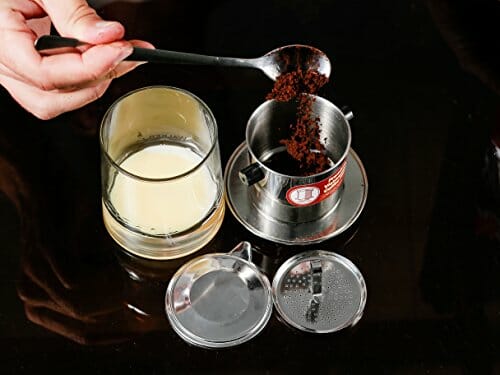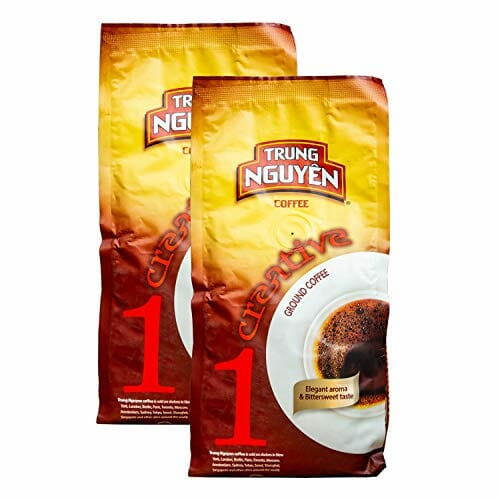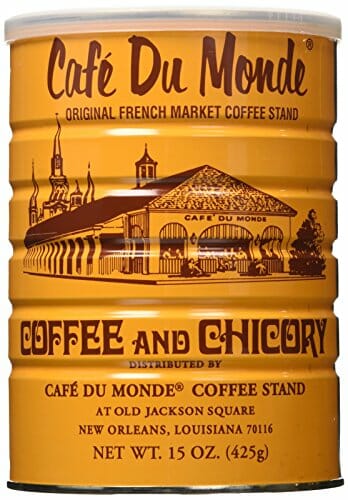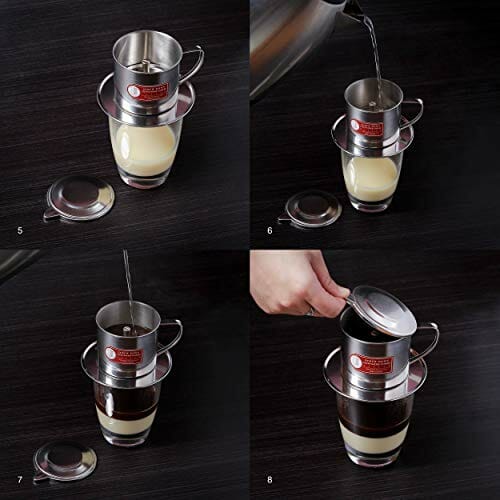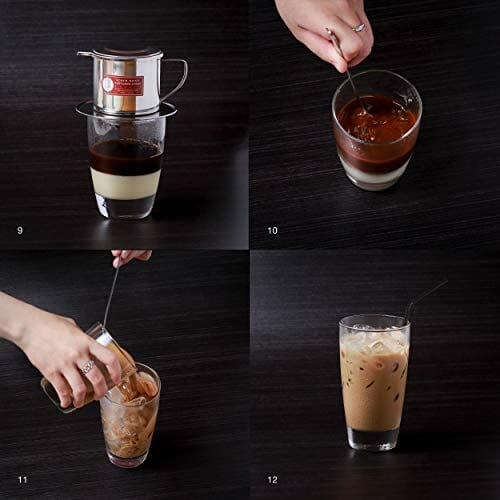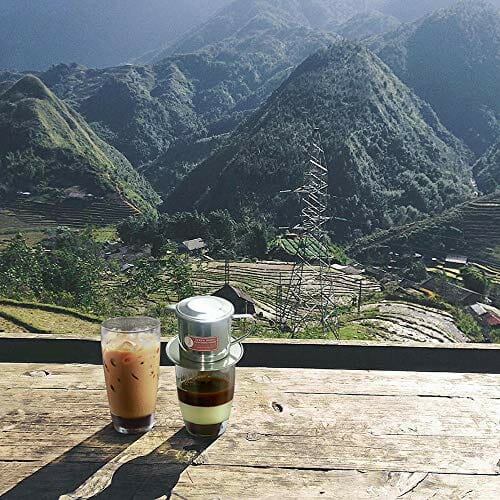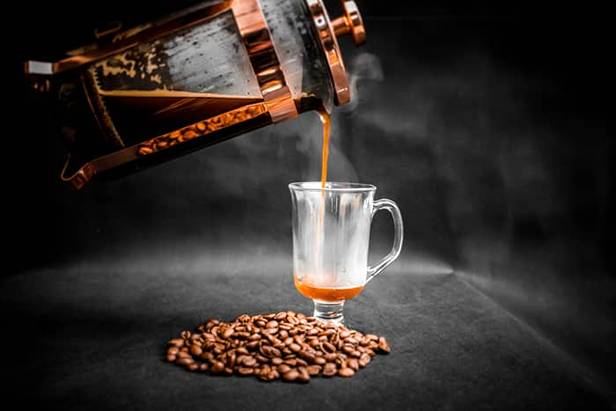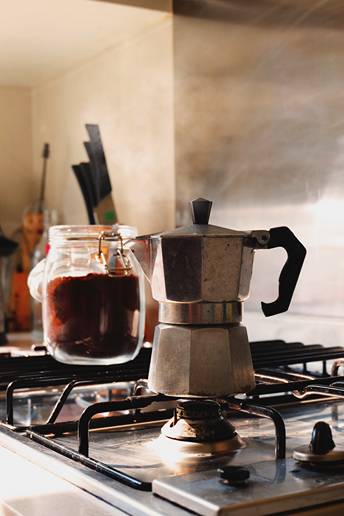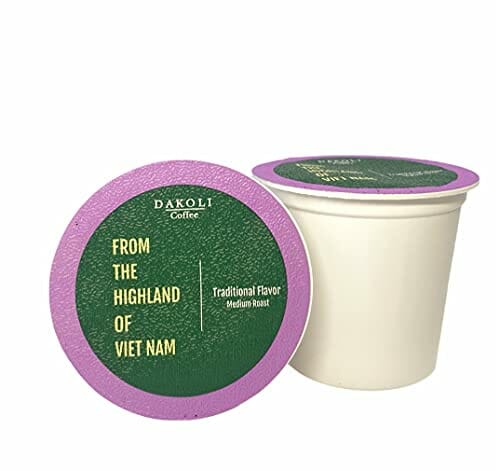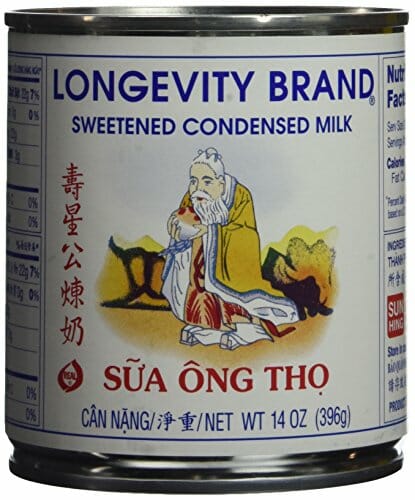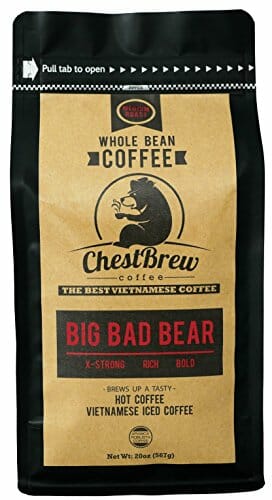On my trip to Hanoi a few years ago, aside from visiting different specialty coffee shops to fill in My Global Specialty Coffee Map, I got a taste of the traditional Vietnam coffee and was fascinated by its unique taste and brewing method.
In this article, I will show you how to make Vietnamese drip coffee, introduce to you a couple of Vietnamese coffee recipes and how to brew them in the traditional way and the compromising ways.
Come for the love for “Ca phe sua da” and stay for the extremely useful tips to make Vietnamese coffee.
Jump straight to the how-to here.
Does Vietnam Have Good Coffee?
Let’s start with a little background on the coffee industry of Vietnam.
Introduced to Vietnam by the French in the 19th century, these aromatic beans have now become one of Vietnam’s key exports, bringing in billions of dollars each year.
So it’s no surprise that people in this country know their way around a cup of coffee being the 2nd biggest exporter in the world.

And, due to the increasing rate of globalization with the foreign coming in and the native moving out, Vietnamese coffee has finally caught on with the rest of the world.
Why Is Vietnamese Coffee Different?
Beans
The majority of the beans grown in Vietnam are Robusta, which is usually considered to be inferior to Arabica due to its bitter and bold taste, high acidity, and high caffeine content.
So, the main factor that makes Vietnamese coffee different is that it’s typically made with Robusta beans that are abundantly available.
Roast
The characteristic bitterness and strength is also the result of using dark roast coffee that is slowly roasted to enhance the strength and depth of the flavors. Some people say it’s similar to the French Roast.
Since the Robusta beans have very little sugar and fat compared to Arabica, sugar, butter, and vegetable oil are usually added to bring out the rich flavor profiles and caramel notes during the roasting process.

Brew
Another special thing is the brewing technique. The Vietnamese are laid-back and often take things slow to enjoy the moment.
When they make Vietnamese coffee, the Vietnamese set up the signature phin (/feen/) filter to let coffee drip into the serving heatproof glass slowly and naturally.
They then patiently wait until the process ends, producing a thick and concentrated cup.
Setting up, waiting, and picking the right moment to start drinking are all part of the experience.
Kick
To counter the innate bitterness, many Vietnamese are also fond of sweet coffee with added condensed milk and ice. Other interesting combinations include eggs, yogurt, coconut, and so on.
The Vietnamese are creative and know exactly how to make Vietnamese coffee tasty and interesting.
Why Is Vietnamese Coffee So Strong?
Vietnamese coffee is renowned for its strong, bold flavor. And there are a few reasons why this type of coffee is so potent.
First, Vietnamese coffee is typically made with Robusta beans that are sharper in flavor and higher in caffeine content.
The beans are also dark roasted. This allows the beans to retain more of their natural oils, which contributes to the coffee’s rich flavor.
And Vietnamese coffee is usually brewed using the phin filter. This results in a concentrated brew that is packed with flavor.
Finally, Vietnamese coffee is typically served with sweetened condensed milk. This adds a touch of sweetness and creaminess that adds to the richness of the cup.
So if you’re looking for a strong cup of joe, Vietnamese coffee is definitely the way to go
What Is Vietnamese Drip Coffee?
Cà phê phin, Vietnamese drip coffee, is Vietnamese coffee made using the signature Vietnamese coffee filter, the phin.
What Is A Phin?
A phin is a Vietnamese metal filter that helps produce slow, thick, and concentrated drip with no paper filter. It consists of 4 main components:
- A perforated plate sitting on top of the serving coffee mug or glass allowing the coffee to drip
- A brewing chamber sitting on top of the plate to which ground coffee and near-boiling water are added
- A filter press (coffee press) to tamp the coffee grounds and keep them in place when brewing
- A cap (lid) to prevent the heat from escaping
How Much Coffee Is In A Phin?
This Vietnamese coffee filter comes in an array of sizes, from 4 oz (118.3 ml) to as large as over 40 oz (1183 ml).
The common single-serve phin size is 4 oz. Those who want a larger single-serve or a double-serve would use an 8 oz phin.
For large gatherings or busy shops, a 40 oz phin metal filter can be utilized to accommodate larger batches.
Types Of Beans Used For Making Vietnamese Coffee
For the most authentic Vietnamese experience, you should use Robusta beans or a blend from Vietnamese brands. The popular ones are:
1. Trung Nguyen Gourmet Blend from Trung Nguyen coffee.
Trung Nguyen Coffee is well-known both inside and outside of Vietnam, so rest assured when you use their premium blend to make Vietnamese coffee.
2. Big Bad Bear from Chestbrew: A newer brand compared to the long-standing Trung Nguyen.
Their Vietnamese coffee beans are worth a try as the young owners are passionate to introduce Vietnamese coffee to the world.
An alternative to Vietnamese beans can be:
3. Coffee and Chicory of Cafe Du Monde coffee due to their similar bold and rich flavor profiles. Many Vietnamese immigrants to America actually use this Cafe Du Monde coffee brand to recreate their beloved Vietnamese drink from their home country.
Moreover, most Americans’ first contact with Vietnamese coffee is from dining at a Vietnamese restaurant in the US.
So, by using Coffee and Chicory of Cafe Du Monde coffee, they can make Vietnamese coffee at home, similar to the taste they fell in love with at Vietnamese restaurants.
Although Cafe Du Monde is an acceptable substitute grind when you’re unable to get your hand on the real thing, as the name suggests, the coffee is laced with the chicory herb.
Therefore, for those who’ve had the chance of tasting the real stuff in its homeland, expect some differences in notes and taste.
How Do You Grind Coffee For A Phin?
It’s recommended to grind the beans finely like sand. Check out my Ultimate Grind Size Chart here to see what it’s supposed to look like.
If the grind is too fine, the drip will be too slow, leading to over-extraction.
And, if the grind is too coarse, the coffee-to-water contact time will be too short. Near-boiling water will flow through too quickly, resulting in an under-extraction.
I will address the standard speed of drip in the next section.
How Do You Make Vietnam Drip Coffee?
Prep time takes about 4 minutes and brewing time is around 5. Follow these 9 simple steps below to brew yourself a single serving of delicious caffeine-packed Vietnamese coffee:
Step 1: Prepare water
- Heat 6 oz (177.4 ml) of water to reach 195 – 205 degrees Fahrenheit (90.6 – 96.1 degrees Celsius). Use a water thermometer to assist you.
- Otherwise, you can use boiling water and let it cool down for a bit before using it.
Step 2: Set up the phin brewer
Place the perforated plate and the brewing chamber on top of the serving glass cup.
Step 3: Preheat
Pour 2 oz of near-boiling water through the serving glass cup and the phin filter to preheat.
Step 4: Prepare grounds
Add 14 grams (0.5 oz) of finely ground dark-roasted coffee to the brewing chamber. You can use a French roast as well.
Step 5: Preinfuse coffee
- Wet the ground bed with a bit of hot water (around 0.8 oz / 23.7 ml).
- Set the timer and let it bloom for 30 seconds. This preinfusion step is similar to using a French Press and Pour-Over coffee makers. Leaving some time for the coffee grounds to steep, expand, and release carbon dioxide helps the coffee ground come into contact with hot water more easily afterward.
Step 6: Insert the coffee press
- Fit the coffee press inside the chamber on top of the bloomed coffee.
- If the phin comes with a screw-down filter press, gently screw it down on top of the grounds until it stops.
- Don’t take it out.
Step 7: Add more water
- Pour the rest of the hot water into the brewing chamber.
- Put the lid on top to prevent the heat from escaping.
Step 8: Brew Vietnamese coffee
Wait for the goodness to slowly drip and time to see whether you need to make adjustments to the grind size and/or the filter press:
- The beginning is very slow. The first drip may happen after 1 or 2 minutes into the brewing process.
- It should finish dripping after around 5 minutes.
Step 9: Make adjustments for a better cup
If the coffee takes too long to drip:
- Use a fork, chopstick, or other utensils to adjust the perforated insert to let the ground coffee release more extra gas for a bit. Then drop the filter press back in place, put the cap on and wait for the coffee to brew and drip. Remember that the phin brewer is super hot so don’t directly touch it with your hand.
- In case it’s not an issue with coffee degassing, your grind size may be too fine, clogging the perforated plate and water cannot slip through.
On the other hand, if your coffee finish brewing in less than 3 minutes, it’s likely that:
- The filter press wasn’t screwed on tightly enough
- Your ground coffee is too coarse
What you get won’t be tasty thick and full-bodied Vietnamese coffee. Instead, it will just be distasteful runny brown water.

Can You Make Vietnamese Coffee With Other Coffee Makers?
As tasty as Vietnamese coffee is, not many people own a phin filter at home.
Luckily, you can still make similar tasting Vietnamese coffee using more well-known methods. Just make sure to use Vietnamese coffee beans to make the result taste as identical as possible.
French Press
The filter attached to the plunger rod of the French Press is not very good at filtering out fine particles of coffee.
So instead of using finely ground coffee beans, opt for medium-coarse and medium to dark-roasted coffee beans.
You can use the whole beans of the brands I’ve suggested above, change the setting on your grinder to medium coarse, and you’re good to go.
You can brew Vietnamese coffee the same way you’ve been using the French Press:
Step 1: Heat 8 oz (236.6 ml) of water.
Step 2: Preheat the French Press with 2 oz (59.1 ml) of water.
Step 3: Add 14 g of coffee grounds to the beaker.
Step 4: Wet the coffee ground bed with a bit of water and use a spoon to stir the mixture.
Step 5: Put the lid on and let it bloom for 30 seconds.
Step 6: Add the rest of the water, put the lid on, and set the timer for 3 minutes and 30 seconds.
Step 7: Press down the plunger and serve.
The Vietnamese coffee recipe above is for one serving of using a modified 1:12 ratio suitable for a French Press. If you want a thicker and stronger brew, adjust the coffee-to-water ratio accordingly.
I’ve covered everything you need to know about using a French Press in this article for more details.
Moka Pot
A Moka Pot is an Italian coffee maker that uses steam pressure to brew coffee.
As long as you have a heating source of some sort such as a stovetop or a campfire, pull this neat coffee-making device out for some simple caffeine fix.
Here’s a Vietnamese coffee recipe for a 3-cup Moka pot, which produces 6 oz (177.4 ml) of coffee:
Step 1: Disassemble the Moka Pot.
Step 2: Fill the bottom chamber with 6 oz (177.4 ml) of water.
Step 3: Fill the second-story basket with 21 g of ground coffee and tamp it down.
Step 4: Assemble the compartments.
Step 5: Heat the Moka Pot at medium-low heat.
Step 6: Remove the pot from heat once you hear sputtering sounds. Let it sit for 3 minutes and serve.
To learn more about the Moka Pot and other stovetop coffee brewing methods, click here.
Capsule Machine
If you have a Capsule Coffee Machine at home such as a Keurig or a Nespresso, you can make Vietnamese Coffee using flavored coffee pods.
Check out this K-Cup from the brand Dakoli serving traditional Vietnamese Coffee. Find the complete guide to using a Keurig Coffee Machine here.
Is Vietnamese Coffee Stronger Than Espresso?
Yes, in terms of both taste and caffeine content, Vietnamese coffee is perceived to be stronger than espresso.
First of all, the strength in taste is the result of the combination of Robusta beans, very dark roast, the brewing method using the phin coffee filter, and the comparably high coffee-to-water ratio, most of which I’ve explained above.

This combo helps create a drip of a thick, concentrated, mouthful, and extremely bitter coffee, much harder to handle than your typical cup of espresso.
That’s why most people opt for the sweeter version containing condensed milk or add ice to the coffee drink to water it down a bit. I’ll explain more about these recipes in the next section.
Secondly, in terms of caffeine content, both Vietnamese coffee and espresso may use a blend of both Robusta and Arabica.
However, if you drink authentic Vietnamese coffee in Vietnam, the baristas likely use 100% Robusta beans, which are known to contain nearly double the amount of caffeine found in Arabica.
On the other hand, even when there’s Robusta in espresso, the blend usually contains 80 – 90% of Arabica beans, sparing only 10 – 20% for the former for the ideal balance.

This has already set a major difference in caffeine content between the two beverages.
Another factor that can explain the amount of caffeine in Vietnamese coffee is the slow drip rate of the coffee filter and the fine grind size.
Long coffee-to-water contact time helps extract more coffee compounds and caffeine as well.
What Is Vietnamese Iced Coffee?
The hot Vietnamese coffee brewed using a Phin filter is too bitter for many coffee drinkers’ tastes, even the Vietnamese.
Therefore, the more popular version is Vietnamese iced coffee.
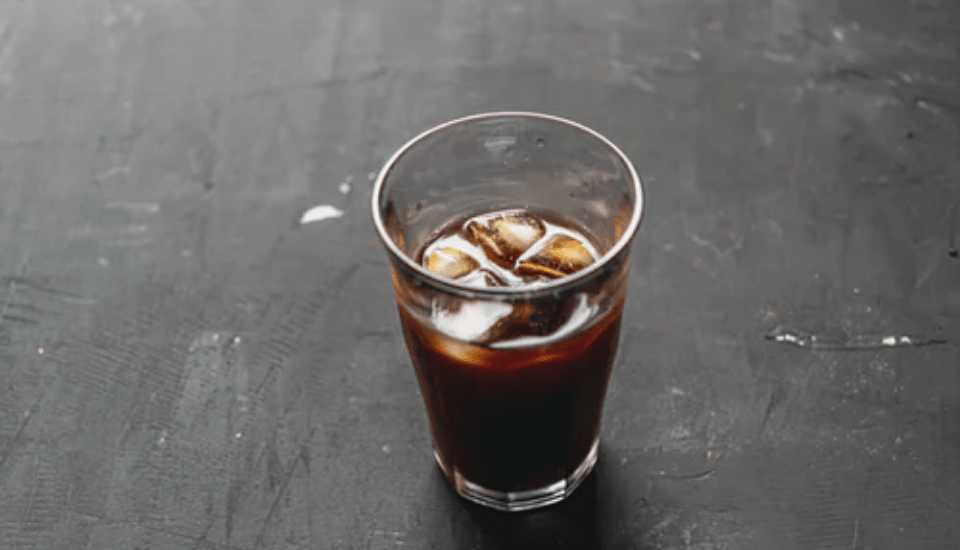
In Vietnam, Vietnamese iced coffee is just simply Vietnamese coffee and added ice.
Vietnamese people call it Cà phê đá (Iced Coffee), Cà phê đen đá (Black coffee with ice), Đen đá không đường (Black with ice and no sugar), or just Đen đá (Black with ice).
However, globally, Vietnamese iced coffee is characteristically known for the blend of bitter Phin coffee and condensed milk and ice. It’s so popular that this is actually what most people refer to when they say Vietnamese coffee.
Since it’s such a popular must-try drink to tourists and ex-pats coming to Vietnam, it’s likely the Vietnamese would understand that you want the version with sweet condensed milk, Cà phê sữa đá, when ordering Vietnamese iced coffee.
However, if you really can’t handle strong coffee and want to avoid any sort of mix-ups, specify by asking for a Vietnamese iced milk coffee, Vietnamese iced coffee with sweetened condensed milk, or Cafe sua da as the locals call it.
Why Do Vietnamese Use Condensed Milk?
As I’ve repeatedly mentioned, Vietnamese coffee is supposed to be thick with a full-bodied taste.
Adding regular fresh milk to a cup of Vietnamese coffee will water it down and make it lose its distinctive concentration.

Moreover, the remarkable bitterness of Phin coffee needs to be balanced out with the incredible amount of sugar in sweetened condensed milk.
If you’re wondering whether evaporated milk is the same as condensed milk, the answer is: No.
Evaporated milk is just condensed milk due to having the majority of the water content removed. There’s no added sugar in evaporated milk like sweetened condensed milk.
Therefore, to make Cafe sua da, use sweetened condensed milk.
What Is The Best Sweetened Condensed Milk Brand?
You can use any brand of sweetened condensed milk near you. Check them out on here.
If you drink Cà phê sữa đá at a Vietnamese coffee shop, high chance the sweetened condensed milk they use is from the nationally beloved Longevity brand, Sữa ông thọ.
You can try looking for them at an Asian market or store or seek them out here.
How Do You Make Vietnamese Iced Coffee?
If you want to make Vietnamese coffee with just ice, brew hot coffee using the Vietnamese coffee filter, then pour it into another tall glass filled with ice cubes and it’s ready to be served.
For those who love Vietnamese iced coffee “cà phê sữa đá”, also known as Vietnamese coffee with milk and ice, in just 5 steps, you can make your own tasty cup of Joe:
Pour 1-2 tablespoons sweetened condensed milk into a glass. You can add more condensed milk later based on your taste as well.

Follow the instructions above by placing the Vietnamese Phin filter on top of the glass holding sweetened condensed milk. Grab another tall glass full of ice cubes.
Once the coffee finishes dripping into the cup, you can see that the sweetened condensed milk and traditional drip coffee layers are still separate from each other. Grab a spoon and stir them together.
You can enjoy this Vietnamese milk coffee (cà phê sữa) hot, or pour the whole mixture over the ice cubes in the tall glass you’ve prepared. And voila, the delicious Vietnamese iced coffee is served!
How Do You Order A Vietnamese Iced Coffee From Starbucks?
If you don’t have the necessary equipment or time to make Vietnamese iced coffee yet love Vietnamese coffee so much, let me show you the way to order a cup with a similar taste from Starbucks.
Sadly, there’s no menu for this at your local Starbucks, but here’s an order that can help satisfy your cravings: Iced quad espresso (4 shots of espresso with ice) and 2-3 pumps of white mocha.
It’s not 100% accurate but similar enough to real Vietnamese coffee – Cafe sua da – to become popular among the Vietnamese living abroad.

What Is Vietnamese Egg Coffee?
As I’ve mentioned at the beginning, I briefly got the chance to taste Vietnamese coffee, including the traditional hot coffee, the one with sweetened condensed milk, and egg coffee.
The idea may appear foreign to many who haven’t branched out to try a variety of coffee recipes from different cultures and countries. But trust me, it tastes and looks much better than you think.
In fact, Vietnamese Egg Coffee is known as one of the must-try Vietnamese coffees when one arrives in Hanoi.

Who Invented Egg Coffee?
This treat was known to be whipped up and popularized by a barista and owner of Giảng Café, one of the oldest cafés in Hanoi. The idea of using chicken eggs in coffee was actually brought forth out of necessity.
Back in the 1940s, milk in Vietnam was very scarce due to the ongoing war with the French. This caused the owner, Mr. Nguyễn Văn Giảng, to come up with something suitable to replace milk in coffee.
The creaminess, fattiness, and foaminess of egg yolks beaten with sugar in coffee managed to create a rich, smoothy, and velvety cup of coffee that he was looking for.
Since good coffee needs no bush, soon everyone is coming to Giảng Café to get a sip of their delicious egg coffee.
To this day, though the café has moved its location several times and egg coffee has become a popular item offered in many coffee shops in the Old Quarter, many still look for Giảng Café for their authentic taste.
How Do You Make Vietnamese Egg Coffee?
If you can’t go to Hanoi Vietnam soon to drink Vietnamese coffee from the original creator, make a cup yourself using the 4 steps below.
Following the modern changes to Egg coffee in Vietnam, this recipe also uses condensed milk.

Step 1: Make Vietnamese drip coffee
- Our central theme today is coffee brewed by the Vietnamese coffee maker. Brew a serving of Vietnamese drip coffee using the coffee filter or any other drip device I’ve listed above.
- After it finishes dripping which takes around 5 minutes and you haven’t finished Step 2, put to cup into a bowl filled with hot water to keep sustain the heat.
Step 2: Prepare the egg cream
- In one bowl, add 2 egg yolks, 1 teaspoon of honey, 1/2 teaspoon of sugar, and 1-2 tablespoons of sweetened condensed milk.
- Use an electric hand whisk to whip it up until the mixture expands and becomes thick and foamy, which takes around 5 minutes, just in time for coffee.
Step 3: Put coffee and egg together
- Slowly pour 1/2 of your Viet coffee into the serving glass.
- Slowly pour the egg-cream mixture on top.
- Slowly pour the rest of the coffee on top.
Step 4: Serve
- Use a spoon to lightly mix it up. Don’t overdo it; or else, the coffee will get cold fast.
- Leisurely enjoy your cup of Vietnamese egg coffee.
To Close
I hope that was helpful so you can start recreating the same great strong flavor of Vietnamese coffee from your favorite Vietnamese restaurant.
Whether you make Vietnamese coffee in the traditional way using the simple device of Vietnamese Phin or with a coffee maker you’ve already owned, take a moment to wind down and relax while the coffee drips to mimic the authentic coffee drinking experience in its home country.



